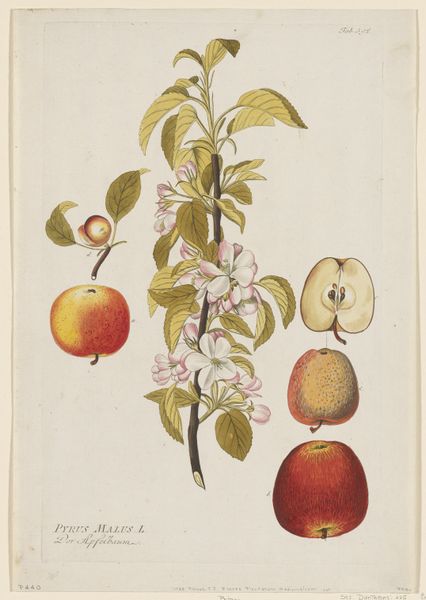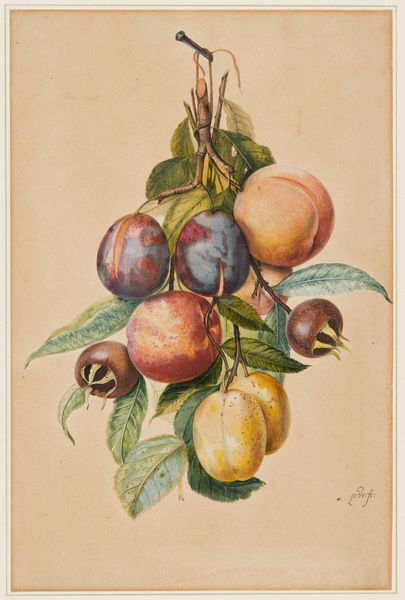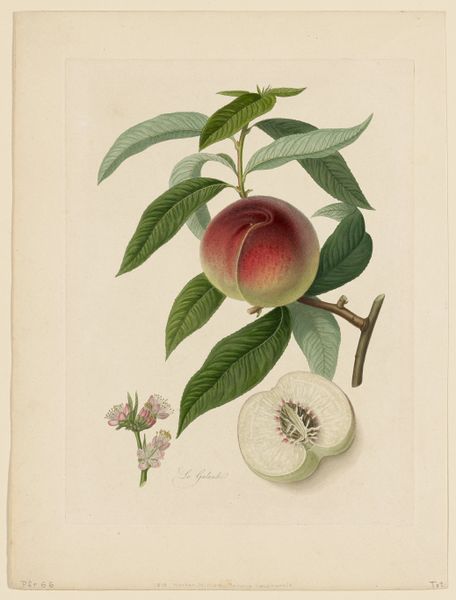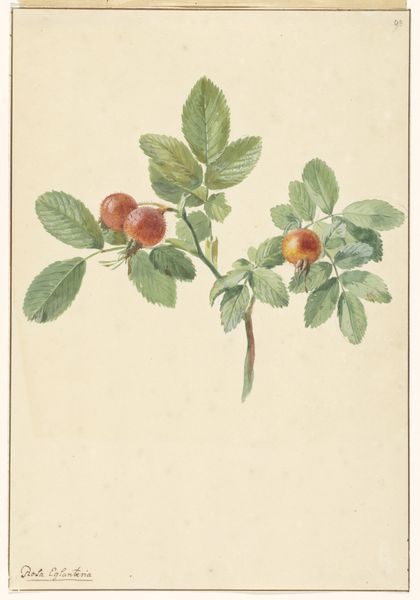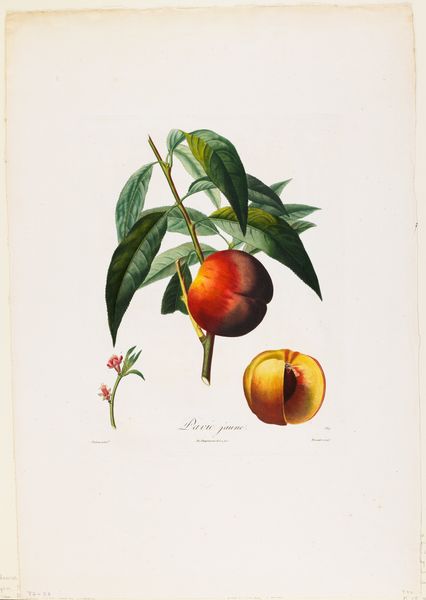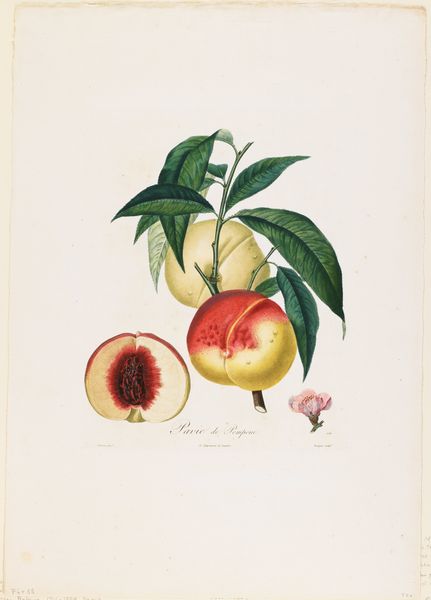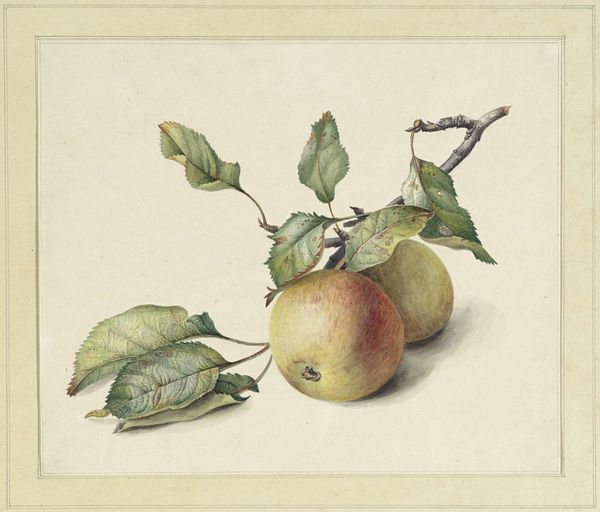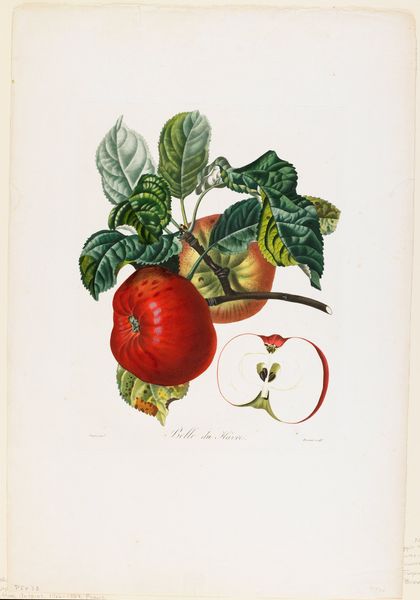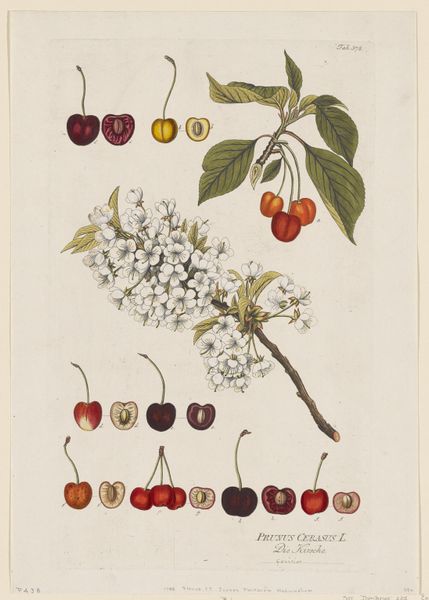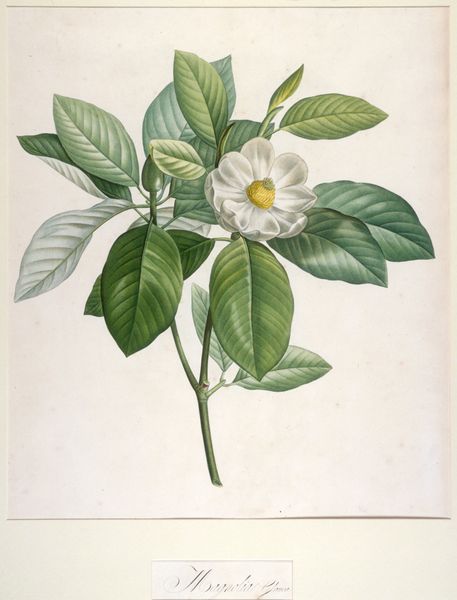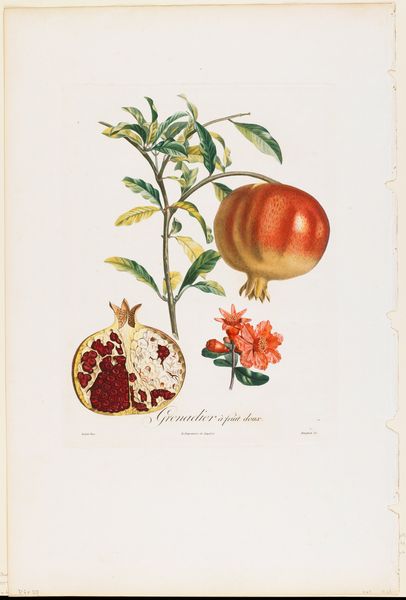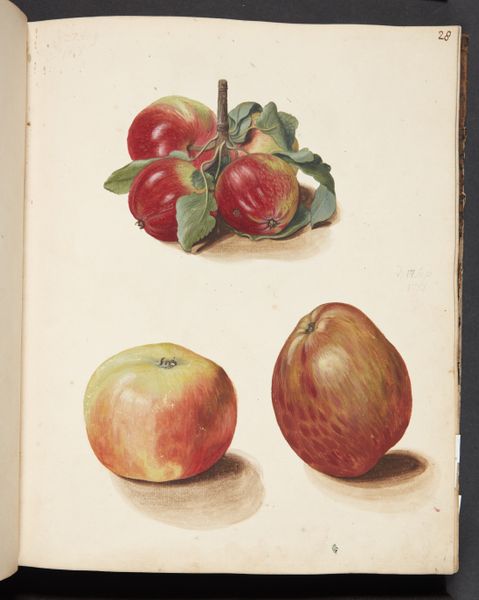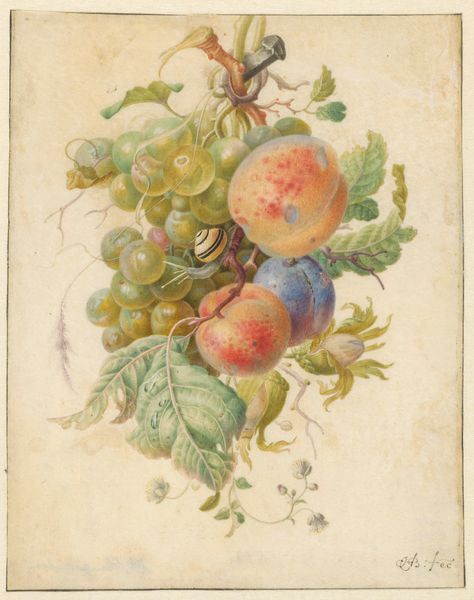
print, plein-air, watercolor
#
water colours
# print
#
plein-air
#
landscape
#
watercolor
#
watercolor
Dimensions: 13 1/2 x 9 3/4 in. (34.29 x 24.77 cm) (plate)
Copyright: Public Domain
Curator: Standing before us is "Orange Tree," a watercolor print from 1784-1789, housed right here at the Minneapolis Institute of Art. What catches your eye initially about this rendering of an orange branch? Editor: The luminosity, certainly. The way light plays across the fruit’s skin, transitioning from vibrant orange to nearly white highlights, suggests a fleeting, ephemeral moment captured in delicate washes. The composition, contained within an oval frame, is striking, lending the study a focused intimacy. Curator: Indeed. The image brings into view the historical backdrop when botanical illustrations held cultural and scientific value. Orange trees themselves were loaded with symbolic meanings. As products of colonial trade routes, their depiction invites commentary on early exchange between nations, and raises the consideration of privilege and access. Editor: While those factors certainly inform our viewing, consider also the way the artist has captured the veins in each leaf and the near-perfect symmetry of the blossoms. Semiotically, those elements serve to freeze life into pure sign, a stable referent standing in for organic processes. Do we consider this an accurate portrayal or is the scientific ideal reshaping what we expect nature to be? Curator: The level of naturalism points us back to class and status, wouldn’t you say? The luxury of studying details while economies are established on the backs of exploited labor. It feels complicit. I am intrigued that you speak of ideal; it really is a European perspective, isn’t it? Editor: Yet the very restraint in palette also allows for subtle modulations in shading and hue. Consider how the artist uses a narrow spectrum to construct convincing volume and texture. What might seem limited is instead wielded as a tool for achieving specificity within carefully constructed formal parameters. It's an object study for us to consider color and light within the bounds of artifice. Curator: True. It shows how an seemingly harmless print can be so complicated when it is embedded in the socio-historical matrix. It becomes about far more than aesthetics, but how we choose to depict nature at certain pivotal moments. Editor: A superb intersection of nature, artistic skill, and our own engagement. It's clear the "Orange Tree" provides rich ground for interdisciplinary dialogues.
Comments
No comments
Be the first to comment and join the conversation on the ultimate creative platform.
